UNIRE ET PROSPERUM
The association of the free and the strong, the unanimity of the creative and the brave, the synergy of experience and the thirst for knowledge, respect for traditions and openness to dialogue is our way to prosperity in an energetically stable world.

SYNERGOATOM is a SYNERGY of peaceful ATOM knowledge for the purpose of effective professional interaction between scientific, technological, and industrial enterprises in the field of nuclear energy using renewable sources. To a large extent, the activities of SYNERGOATOM are connected with Ukraine. The development of nuclear science and energy in Ukraine today is a symbol of civilizational renewal and an example of how important collective responsibility and a systematic approach to the energy and economic security of the European continent are. The position of the SYNERGOATOM management as a specialized backbone structure is unequivocal – by combining the efforts of the European professional community, we are building new models of international cooperation in the field of strategic energy, strengthening traditional methods of industry interaction, opening up space for the evolution of technical progress.
THE MAIN ENTITIES OF THE GROUP

Engineering group BRESSON, as a representative of traditional Czech mechanical engineering, brings together experienced project managers, engineers, designers, and technicians in the field of innovative development of special materials and power equipment for the nuclear industry in technological combination with renewable generation sources.

EUROPEAN ASSOCIATION FOR ENERGY SECURITY z.s. is an independent non-profit legal entity registered in the jurisdiction of the Czech Republic, specializing in the protection of technology transfer and international flows of scientific data. Part of the EAES activity is humanitarian support for the Ukrainian professional community in the SYNERGOATOM projects.

WITKOWITZ is a brand of unique mechanical engineering solutions: large-size forgings made of special alloys, complex gearboxes, pressure tanks, or heavy-duty steel structures. They can be found, for example, in the form of bridges; as a part of ship engines, industrial installations, or hydro, wind, and nuclear power plants operating with renewable energy sources.

CESTA has the legal status of an “Institute” registered in the jurisdiction of the Czech Republic. The administration as well as the legal address of the Institute is located on the basis of the Faculty of Mechanical Engineering of the Czech Technical University in Prague. The scientific and technical program of the Institute includes the involvement of Ukrainian scientists and specialists in the field of applied nuclear physics, as well as talented Ukrainian youth. The CESTA Institute, established by the European Energy Security Association (EAEC), has become a platform for the creation of the Center for Energy Stability (CESTA) “SYNERGOTOM”. As part of the humanitarian activities of the EAEU, as a result of Russian aggression against Ukraine, the European Alliance of Ukrainian Scientists (EAUS) was created on the basis of the Institute.

SYNERGOATOM SE is a European company headquartered in Prague, which is the head office of the SYNERGOYATOM Group. Here, in the heart of Europe, the birthplace of Emil Kolben, Vaclav Klement, František Křižík, Emil Škoda, and other engineering geniuses, a new European platform for international cooperation in the field of nuclear science and energy is being distributed. The company is the main coordinating center for interaction with Central and Eastern European partners in matters of cooperation on programs of the CESTA SYNERGOYATOM platform.

SYNERGOATOM UKRAINE LLC, whose office is located on the basis of the Institute for Security Problems of the NAS of Ukraine, is the Governing Body of the Center for Energy Stability (CESTA) SYNERGOATOM, cooperating with leading Czech, Ukrainian, and Polish scientific, technical, design, engineering and industrial organizations. SYNERGOATOM UKRAINE is the Governing Body of the Center for Energy Stability SYNERGOYATOM, and the key company of the Group in matters of international cooperation on the development of SMR technologies.

SYNERGOATOM POLAND LLC is the European branch of the Group, with a technical office located in Warsaw. Acting in consultation with CESTA SYNERGOTOM partner EKOPARK SA, the operator of CBOINT (Renewable Energy Sources and New Technologies Security Certification) with the Research Center KEZO Research of the Polish Academy of Sciences, SYNERGOATOM POLAND is one of the key administrative centers for the macro-regional development of small nuclear energy technologies, energy storage, hybrid technologies in the area of RES.

BRESSON POWER JSC is the main engineering and technology company of the BRESSON Group, engaged in the development of technologies and materials for nuclear power, in close cooperation with leading Czech and Ukrainian scientific, technical, and industrial organizations. BRESSON POWER is a direct partner of the WITKOWITZ Group in a number of its key projects.

CZECHATOM has been founded by the BRESSON and WITKOWITZ association for the development of the Czech technology of the small modular reactor. Czechatom has an in-house team of experienced nuclear specialists who together with a network of cooperating partners design the DAVID SMR Nuclear Island.

WITKOWITZ ATOMICA JSC is a company established in the frame of the partnership of BRESSON and WITKOWITZ Groups (together BREWIT) o develop and commercialize small modular reactor technology to the energy market. One of the key joint BREWIT projects is the DAVID SMR, developed by a jointly established design bureau – CZECHATOM.
CONSULTING COOPERATION

The Association of Veterans of the Nuclear Industry of the Czech Republic is bringing together top personalities with long-term professional careers in important positions in the field of nuclear energy and the use of ionizing radiation. This activity concerns the support of the development of nuclear energy in the general position of the peaceful use of energy and the professional solution of the fuel cycle of nuclear power plants, in particular the solution of the deep disposal of radioactive waste.

The Union of Veterans of Nuclear Energy and Industry of Ukraine unites expert and analytical councils of veterans, which include leading Ukrainian nuclear industry experts, acting under the President of NNEGC Energoatom and the Board of Directors of the National Nuclear Energy Generating Company. The activities of expert-analytical councils of veterans are aimed at preparing recommendations for management on problematic issues and are of a practical nature.

Atlanta Safe, a.s., a founding member and shareholder of the Prague Stock Exchange, was founded in 1992 and was one of the first companies in the Czech Republic to obtain a securities trading license. During its existence, the company has realized business volumes of tens of billion of CZK in issuance and trading on public securities markets in the area of acquiring shares of Czech and foreign companies. One of the priorities of Atlanta Safe is investments in nuclear energy and alternative energy sources.

Grant Thornton is one of the world’s leading organizations of independent, owned, and operated accounting and consulting firms. Grant Thornton provides insurance, tax, and business advice to private companies and public interest organizations. Given the international status of projects initiated by SYNERGOYAT, such a partner as Grant Thornton is certainly one of the key partners for us not only in Ukraine but also in Europe as a whole.
PARTNERS

NSC KIPT, National Science Centre “Kharkiv Institute of Physics and Technology” of NAS of Ukraine.

SumDu, Sumy State University, leader of “Sumy machine-building cluster of energy equipment”

Signatory CBOINT (Certification of Renewable Energy Sources and New Technologies) – Research Center KEZO of the Polish Academy of Sciences is a test and research institute in the field of clean energy technologies and energy storage.

EKOPARК SA, the operator of the CBOINT program, provides services in the field of development of projects in the field of renewable energy in partnership with the KEZO Research Center of the Polish Academy of Sciences.

MIFRE ENERGY is a developer and manufacturer of automated and robotic equipment in the field of energy, x-ray technology, and non-destructive testing.
TECHNOLOGICAL COOPERATION

Institute of Thermomechanics of the Czech Academy of Sciences

Czech Technical University in Prague

Czech Institute for Nuclear Research ÚJV Řež, a. s.

AFRY CZ, Czech division of the International engineering, design, and advisory company ÅF Pöyry

Slovak Research Institute of Nuclear Energy

Czech State Institute of Nuclear, Chemical and Biological Protection, v.v.i.

Kyiv Institute for Nuclear Research of the National Academy of Sciences of Ukraine

State Enterprise National Nuclear Energy Generating Company “Energoatom” of Ukraine

Intergovernmental organization Science and Technology Center in Ukraine
COORDINATING COUNCIL
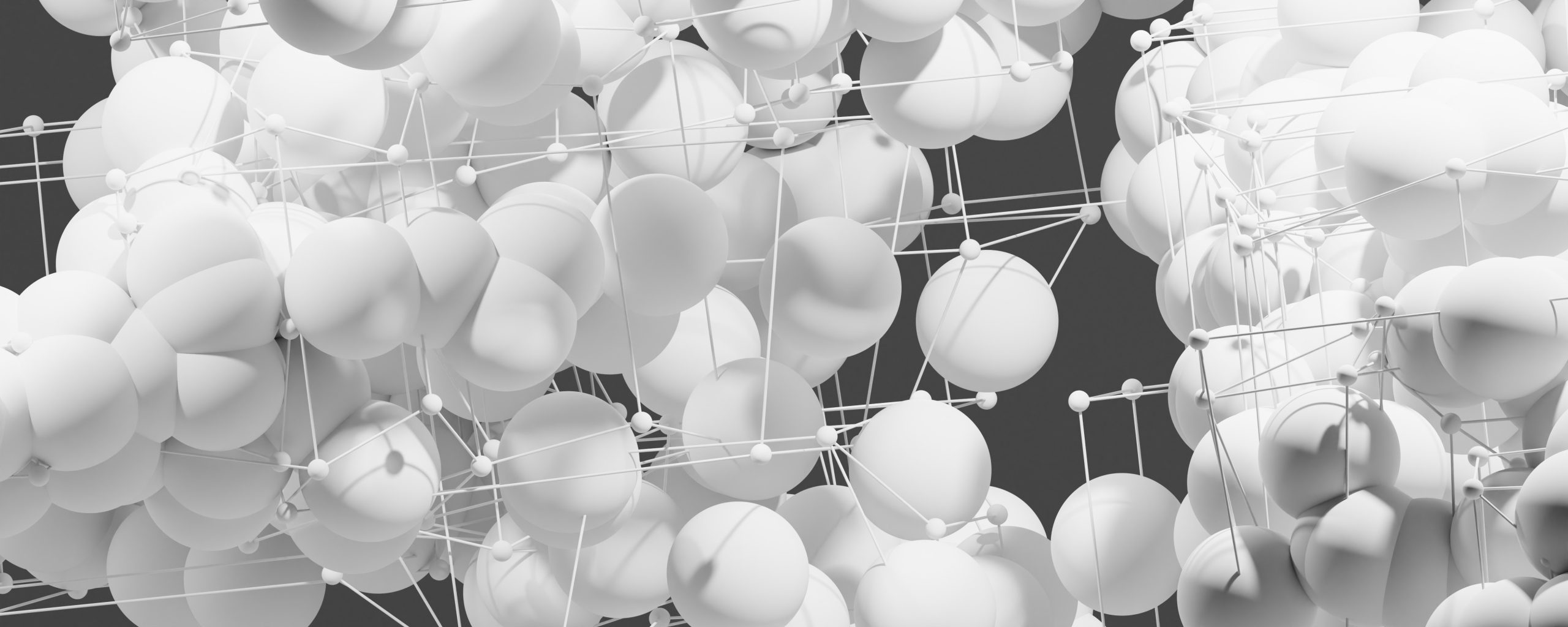
Council members, relying on their experience and knowledge, act in the interests of the implementation of programs and projects initiated and managed by SYNERGOАTOM. The tasks of the Council include the definition, preparation, and approval of development plans, and recommendations on legal, economic, regulatory, technical, and other mechanisms of specialized interstate interaction in selected priority areas of SYNERGOATOM’s activities.
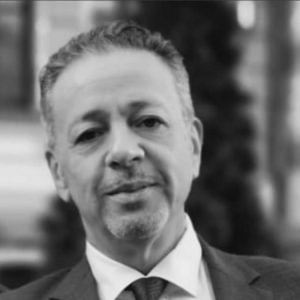
BRONISAV KULIKOV
Chairman of the Coordination Council
COB, EAES / SYNERGOATOM SE
CSB WITKOWITZ ATOMICA
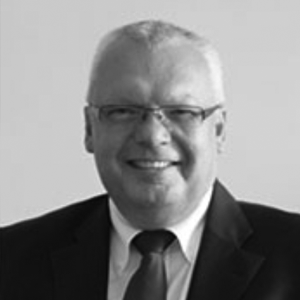
ANATOLII NOSOVSKIY
Vice-chairman of the Coordination Council
Academician, Director of the Institute for Security Problems of the National Academy of Sciences of Ukraine
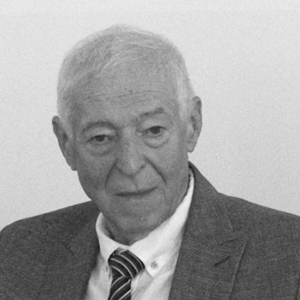
MAKSYM KREMEN
Vice-chairman of the Coordination Council
Head of Ukrainian Union of Veterans of Atomic Energy and Industry
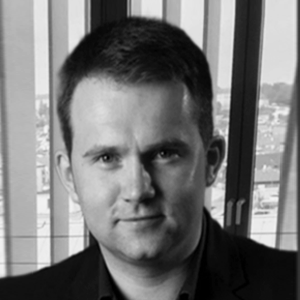
DAVID CHROBOK
Member of the Coordination Council
COB, WITKOWITZ ATOMICA JSC
VCOB, E – INVEST JSC
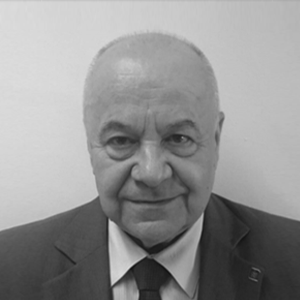
DALIBOR MATĚJŮ
Member of the Coordination Council
Vice-president of the Association of
Nuclear Veterans of the Czech Republic
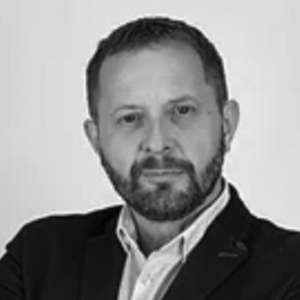
ROBERT OLEJNIK
Member of the Coordination Council
President of EKOPARK S.A., Operator of the CBOINT program
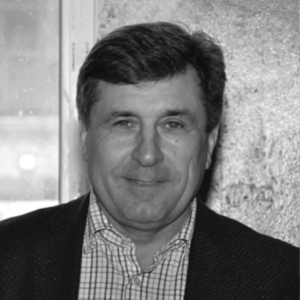
SERGEY SAYENKO
Member of the Coordination Council
Dr. Techn. Sciences, Head of the Scientific Department, National Science Centre “Kharkiv Institute of Physics and Technology” of NAS of Ukraine.
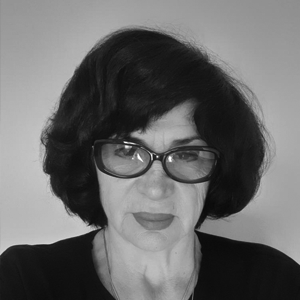
LUBOV SHANINA
Member of the Coordination Council
Expert of the Union of Veterans of Atomic Energy and Industry
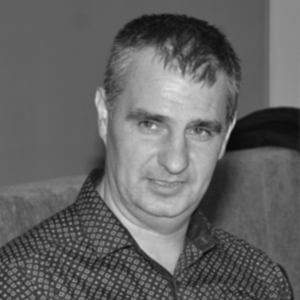
SERGEY PUGACH
Member of the Coordination Council
Head of Technology Transfer Department, National Science Centre “Kharkiv Institute of Physics and Technology” of NAS of Ukraine.
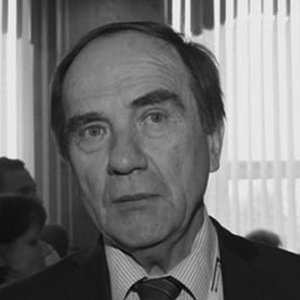
JIŘÍ ŽĎÁREK
Member of the Coordination Council
Vice-president for Business Development, Czech Institute for Nuclear Research ÚJV Řež, a. s.
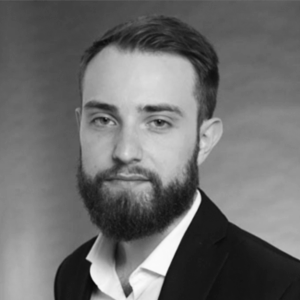
VASYL HRABAR
Member of the Coordination Council
VCOB, EAES / SYNERGOATOM SE
Member of the Scientific and Technical Council CZECHATOM
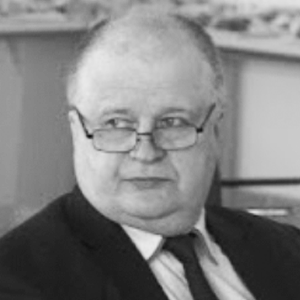
VOLODYMYR RYBALCHENKO
Member of the Coordination Council
Director of the Research and Expert Center for Nuclear and Power Engineering, Sumy State University
FOCUS AREAS

Nuclear safety
Safety of operating nuclear power plants and research reactors
- Long-term operation issues, aging management, and/or the evaluation of safety margins
- Nuclear data and models, nuclear simulations, and computer systems.
- Challenges relate, among other things, to the development of methods and tools to increase safety, the availability of systems, structures, and components needed for reliable and safe management, core physics and thermal hydraulics, monitoring, digital including artificial intelligence, internet of things and digital twins, modeling and simulation, as well as
prevention and mitigation strategies for long-term operation;
Small modular reactors
- Core/fuel (including fuel qualification);
- Nuclear steam supply system integrated vessel and its internals;
- Demonstration of natural circulation passive safety systems also in transient conditions;
- Streamlined harmonized licensing;
- Severe accident analysis;
- Emergency preparedness and response;
- Human and environmental radiation protection;
- Safety, security and safeguard interfaces from the early design stage;
- Modularity, human factors and hybridization/(co)generation of heat/H2 production/desalination;
- Hybrid energy storage systems;
- Nuclear data and models, nuclear simulations, computer systems
Nuclear materials for all types of fission reactors including materials for fusion
- Metallic alloys;
- Ceramics;
- Concrete;
- Materials for fuel cladding;
- Nuclear fuels;
- Substances for neutron control;
- Polymers, Nuclear data, and models, nuclear simulations, and computer systems.
Waste management, safe spent fuel, and decommissioning
- Reduction of the long-lived components of radioactive waste, waste with different radioactivity levels (technologies for treatment, recycling, conditioning, storage);
- Advanced fuel cycle technologies and closed fuel cycle;
- Minimization of high-level radioactive waste;
- Safety of waste;
- Separation technologies;
- Fuel fabrication;
- Transmutation systems;
- Fuel reprocessing;
- Fuel technological aspects, including transportation, cooling, and handling;
- Nuclear data and models, nuclear simulations, computer systems.
Radiation protection
- Radiological protection of the members of the public, patients, workers, and environment in all exposure situations (medical, natural, occupational, accidental, including coexposure and overlapping risks);
- The link between exposure characteristics (radiation quality, dose, and dose rate) and cancer and non-cancer effects, including optimized detection and dosimetry;
- Knowledge base and analytical tools for the major features of variability in the radiation response, including radio-sensitivity (tissue reactions), radio-susceptibility (cancers) and radio-degeneration (aging), radio-induced immune response, in humans and ecosystems;
- Radiobiology from basic mechanisms to clinic and epidemiology, including human and social sciences to further characterize and evaluate ionizing radiation effects;
- Reinforcing the risk/benefit analysis, advancing individual patient dosimetry, developing recommendations, procedures, and tools for improving radiation protection of patients, and supporting the effective transfer of new and optimized medical procedures into clinical practice;
- Recommendations, procedures, and tools for assuring and improving preparedness for nuclear and radiological emergency response and recovery;
- Recommendations for implementing clinical trials involving radiopharmaceuticals in the EU, including the development of individual/specific organ dosimetry for therapeutic applications (in target and non-target tissues);
- Safety and security of radioactive sources;
- Waste management of radioactive sources;
- Reduction of contamination risks Nuclear data and models, nuclear simulations, computer systems.
Non-power applications of ionizing radiation
- Medical technologies (e.g. diagnosis and radiotherapy), development of innovative routes of production of therapeutic and diagnostic radionuclides in EU, looking into reactor-based and alternative methods, including accelerator-based as well as separation/purification methods;
- Nuclear and radiation technologies in a wide variety of applications in industry, research, food and agriculture, environment, security, space, and cultural heritage;
- Nuclear and radiation techniques for producing critical raw materials (recovering rare-earth metals (lanthanides) from any waste);
- Sterilization;
- Modifying the physical, chemical, and biological properties of materials on an industrial scale, Big Data and models, simulations, and computer systems.
Nuclear research infrastructure
- Human resources in the nuclear field: schoolers;
- Human resources in the nuclear field: Master students and Ph.D. students;
- Human resources in the nuclear field: researchers and engineers training TRED collaborations.
POWER ENGINEERING
Design and manufacturing in nuclear power engineering and infrastructure
- Integrated design and pre-project work, as well as conducting feasibility studies in the field of energy;
- Engineering and consulting services in the field of capital construction in nuclear and classical power engineering;
- Services of the Chief Designer, including technical support, coordination, and engineering support for the operation of NPPs and TPPs at all stages of their life cycle, including;
- Support for the economic and efficient operation of nuclear power plants;
- development of EIA documentation;
- Aging management and life extension evaluation of VVER-type NPPs to ensure long-term operation beyond the initial design resource;
- Addition, maintenance, and updating of databases of initial data of projects;
- Creation of evidence documentation in accordance with the required regulatory technical documentation;
- Assessment of the strength and service life of equipment, including forecasting the state of equipment for certain dominant degradation mechanisms;
- Qualification of the equipment for the environment;
- Calculations of the response of equipment to operating conditions using the finite element method (statics, thermal conductivity, fracture mechanics, dynamics, including seismicity and fast events, such as the bursting of broken pipelines);
- Modification and development of management programs (resource management program, controlled aging programs);
- Assessment of perceived risks caused by sudden changes in pressure and temperature;
- Thermohydraulic analysis for strength analyses;
- Database support application projects;
- Performance of feasibility studies of power plants;
- Design and manufacture of the necessary experimental equipment.
- Engineering and consulting services in the field of radioactive waste management (RAO) and equipment decommissioning, in particular for the following activities:
- Detection and identification of radioactive waste, including cases of finding an unknown or abandoned source of ionizing radiation (IR);
- Collection, sorting, and storage of radioactive waste;
- Characteristics of radioactive waste and AI sources;
- Processing and treatment of radioactive waste;
- Transportation of radioactive waste both for processing and for storage in a storage facility (transfer to the state);
- Fuel cycle and nuclear fuel licensing;
- Storage and use of nuclear fuel;
- SNF storage in storage facilities for intermediate storage;
- Long-term storage of SNF;
- Further use of SNF in new-generation reactors.
- Provision of safety assessment services for nuclear and thermal power plants and energy infrastructure facilities using the latest research and development results, including:
- Current monitoring of nuclear and technical safety (supervision, inspections, tests);
- Deterministic assessment of nuclear safety (safety analyses);
- monitoring of probabilistic assessments of nuclear safety;
- Development of technical documentation and implementation of expert assessments of the safety of nuclear installations.
- Design, development, modernization, and renovation of energy and thermomechanical equipment for energy units with VER-1000, VVER-440, AR-1000 reactors, and other units of small modular reactors planned for construction in Ukraine, Central, and Eastern Europe;
- Design and development of equipment for energy systems of renewable and green energy;
- Design and development of devices for integrated RES and green energy systems, using Hybrid energy storage systems.
- Development of energy monitoring systems for generation facilities and electricity consumers;
- Design, development, and creation of virtual simulators for the training of specialists working in the strict regime zone of the NPP.
CESTA SYNERGOATOM


Center for Energy Stability (CESTA) SYNERTOGATOM is an international profile association of non-legal forms of private and public organizations with the aim of cooperation in the framework of joint implementation of science-intensive projects, development of innovative technologies, and their practical implementation in the actively developing closed cycle economy, with an emphasis on energy, information and technological security.
Activities of the CESTA SYNERGOATOM
1. Physical and technical modeling of innovative energy technologies:
- combined environmentally friendly energy systems (nuclear and hydrogen energy, natural sources);
- hybrid energy storage systems;
- nuclear fuel cycle and nuclear safety;
- operating nuclear installations, justification of the safety of operation and decommissioning;
- research and development of new materials and technologies for the storage and disposal of nuclear materials, radioactive substances, and radioactive waste;
- study of the radiation impact on personnel, the public, and the environment during normal operation and design basis accidents of nuclear fuel cycle facilities.
- new generation energy (Small modular reactor (SMR) systems, Generation IV reactors)
- nanotechnology, quantum mechanics, robotization, artificial intelligence
2. Strategic planning of scientific and technical development of innovations in power engineering:
- combined environmentally friendly energy systems (nuclear and hydrogen energy, natural sources);
- nuclear fuel cycle and nuclear safety:
- operating nuclear installations, justification of the safety of operation and decommissioning;
- research and development of new materials and technologies for the storage and disposal of nuclear materials, radioactive substances, and radioactive waste;
- study of the radiation impact on personnel, the public, and the environment during normal operation and design basis accidents of nuclear fuel cycle facilities.
- new generation energy (Small modular reactor (SMR) systems, Generation IV reactors)
- nanotechnology, quantum mechanics, robotization, artificial intelligence
3. Fundamental and scientific and technological experimental research in the field of:
- solid state physics, radiation, materials science, condensed state;
- experimental and theoretical studies of the properties and structure of structural and functional materials under the influence of temperature-force, magnetic, electrical, and radiation effects
- experimental studies of nanostructures, magnetic materials, and thin surface layers
- development of new materials and technologies in the nuclear power industry and other fields of technology
- high energy physics, nuclear physics, elementary particle physics, and new methods of acceleration;
- experimental research and applied research at basic facilities and at accelerators of partner scientific centers
- Experiments in the field of high-energy physics
- Experiments in the field of nuclear structure and nuclear reactions
- Theoretical studies of interactions of elementary particles in space-time with additional dimensions
- Research in related fields, in particular, the application of experimental methods of nuclear physics for research in the field of solid-state physics, materials science, and nanotechnology
- Nuclear medicine and biology
- plasma physics and thermonuclear fusion;
- theoretical plasma physics, calculations, estimates, and modeling
- experimental plasma physics and controlled thermonuclear fusion
- fusion reactor problems
- strengthening links between fusion leaders and other contributing countries
4. Evolutionary philosophy of an energetically stable world:
- Scientific and technical and vocational and educational development:
- startups in the field of energy technologies;
- specialized training and retraining of specialists in the energy industry;
- training of young specialists for work in the energy sector of the new generation;
- General educational and social development:
- publishing and publication activities in the field of development of scientific and technological progress;
- organization and holding of international events aimed at scientific, technical, educational, industrial, socio-political, and socio-economic creative interaction.
- science journalism:
- Innovative technologies and scientific and technical achievements in the energy sector;
- community journalism:
- Formation of a public philosophy of coexistence in an energy-secure world;
SMALL MODULAR REACTORS
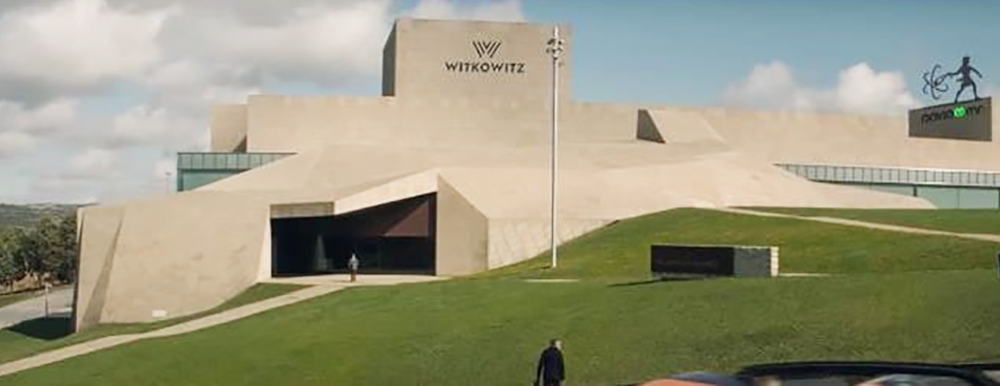
 Individual members of the Steering Committee of SYNERGOATOM are co-authors of the Patent and co-owners of the Czech technology for the small modular reactor DAVID SMR. SYNERGOATOM manages the business strategy for the international development of the DAVID SMR project, while simultaneously creating macro-regional design centers for the implementation of small-scale nuclear power technologies in the countries of Central and Eastern Europe, as well as a significant part of Central Asia and the Middle East. The rich experience of Czech engineers and scientists in the field of nuclear energy, in synergy with the similar potential of their Ukrainian colleagues, created the prerequisites that determined Kyiv as the main technological platform for the development of the international direction of construction and installation technologies, in particular on the basis of the Center for Energy Stability SYNERGOATOM.
Individual members of the Steering Committee of SYNERGOATOM are co-authors of the Patent and co-owners of the Czech technology for the small modular reactor DAVID SMR. SYNERGOATOM manages the business strategy for the international development of the DAVID SMR project, while simultaneously creating macro-regional design centers for the implementation of small-scale nuclear power technologies in the countries of Central and Eastern Europe, as well as a significant part of Central Asia and the Middle East. The rich experience of Czech engineers and scientists in the field of nuclear energy, in synergy with the similar potential of their Ukrainian colleagues, created the prerequisites that determined Kyiv as the main technological platform for the development of the international direction of construction and installation technologies, in particular on the basis of the Center for Energy Stability SYNERGOATOM.
LONG-TERM NSF STORAGE

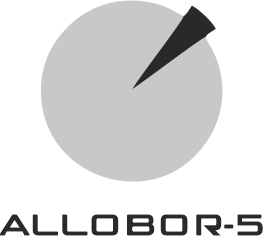 Development of equipment for long-term dry storage of SNF, based on a model range of containers for different types of fuel – from classic nuclear power plants to power units with small modular reactors (SMRs). The design of the container involves the use of a specialized ALLOBOR-5 boron-aluminum alloy, developed by BRESSON POWER together with the Faculty of Mechanical Engineering of the Czech Technical University in Prague. ALLOBOR-5 will form the basis for the design of the inner basket of the container. The project includes the study of various methods for the production of the structure of the inner basket made of ALLOBOR-5 alloy. Methods for the production of rolled sheets, or 3D printing of the basket itself or its parts are considered. In addition to the leading scientific and technical organizations of Ukraine and the Czech Republic, the Institute of Informatics, Robotics and Cybernetics of the Czech Technical University in Prague will take part in the project, in terms of developing robotic manipulation equipment.
Development of equipment for long-term dry storage of SNF, based on a model range of containers for different types of fuel – from classic nuclear power plants to power units with small modular reactors (SMRs). The design of the container involves the use of a specialized ALLOBOR-5 boron-aluminum alloy, developed by BRESSON POWER together with the Faculty of Mechanical Engineering of the Czech Technical University in Prague. ALLOBOR-5 will form the basis for the design of the inner basket of the container. The project includes the study of various methods for the production of the structure of the inner basket made of ALLOBOR-5 alloy. Methods for the production of rolled sheets, or 3D printing of the basket itself or its parts are considered. In addition to the leading scientific and technical organizations of Ukraine and the Czech Republic, the Institute of Informatics, Robotics and Cybernetics of the Czech Technical University in Prague will take part in the project, in terms of developing robotic manipulation equipment.
CHERNOBYL NEW SAFE CONFINEMENT (NSC)

Solving the problems of transforming the facility “Shelter into an environmentally safe system, decommissioning of the power units of the Chornobyl nuclear power plant, safe operation of spent nuclear fuel storage facilities, as well as the safe operation of other radiation hazardous facilities located in the exclusion zone, requires systematic laboratory studies of the current characteristics of nuclear and radioactive materials and forecasting their state over time, as well as the characteristics of radioactive contamination of environmental objects.
As a result of hostilities and the temporary occupation of the city of Chornobyl by russian troops, the infrastructure of the exclusion zone, in particular the premises and equipment of some laboratories, was seriously damaged and damaged, which makes their further use impossible.
The restoration of laboratories in existing buildings that were seriously damaged is not justified, since this requires significant material and financial costs. Therefore, it is proposed to carry out the reconstruction of other buildings that have not received damage and are in satisfactory technical condition. The reconstruction of these buildings provides for changing their functional purpose and equipping them with the latest laboratory equipment, which requires lower costs compared to new construction.
Now a conceptual design has been developed, which demonstrates the possibility of placing radiochemical laboratories of classes 1, 2, and 3 in existing buildings in compliance with the requirements of sanitary legislation. It is planned to create a laboratory for radiation materials science in the 1st and 2nd classes of work and a laboratory for radiation monitoring in the 2nd and 3rd classes of work. The laboratory of radiation materials science for working with highly active samples of nuclear fuel and lava-like fuel-containing materials of the destroyed ChNPP Unit 4 is designed to solve the following tasks:
- study of physical and chemical properties;
- study of microstructure and phase composition;
- simulation of degradation of the microstructure and physical and mechanical properties;
- predicting behavior in the near and long term;
- development of methodological and technological approaches to solid-phase conditioning of nuclear materials to ensure long-term storage and/or their future disposal as high-level radioactive waste.
The radiation monitoring laboratory is designed to solve the following tasks:
- carrying out radiochemical analyses for the content of alpha-, beta-, and gamma-emitting nuclides in samples, radioactively contaminated man-made objects, wastewater, air, and soil;
- study of physical and chemical properties of liquid and solid radioactive waste, aerosol, and hot particles;
- study of the content of uranium, natural and man-made radionuclides in soils, bottom sediments, ground and surface waters, “hot” particles, and air;
- determination of physical and chemical forms of uranium and radionuclides presence in soils, bottom sediments, ground and surface waters, “hot” particles;
- study of the degree and rate of leaching of uranium and radionuclides from nuclear materials.
MACROREGIONAL INSTITUTE FOR NUCLEAR RESEARCH

The creation in Ukraine of an international research institute with an experimental and applied base involves combining the efforts of scientific institutions in Europe to implement joint scientific and technological developments.
The main prerequisites for the creation of MRIA are the following:
- The need for consolidated international scientific and technical cooperation in the field of safety and efficiency of the use of the peaceful atom, to ensure the socio-economic and energy stability of the world community.
- The need to find new solutions in the field of carbon-free energy sources, in particular, taking into account future technologies that go beyond classical nuclear energy;
- The need for training and retraining of specialized scientific, technical, and production personnel, taking into account the high technological requirements in the field of nuclear energy in the context of reformatting the European energy system in the transition to a carbon-free economy;
- The existence of geopolitical risks in technology transfer and the circulation of knowledge flows in the context of the advent of the post-russian economic era, given the critical need to reposition certain international S&T organizations that have long been under russian influence;
EDUCATION META-PLATFORM CHILDORIZON


International META platform for self-education of children of different ages:
Cooperation with Ukrainian and foreign developers of augmented reality technologies within the framework of expected investment programs in order to create an international social and educational platform based on CESTA SYNERGOATOM for children of preschool and primary school age. This involves international communication of children within the framework of multinational classes, mixed according to age, language, social and other characteristics. Thus, children of different mental, social, ethnic, age, linguistic, and state affiliations will communicate their vision of a peaceful, energetically stable and secure future of our Planet. There will be no teachers in the classes, which will be balanced in number from 10 to 20 children – the older children themselves will take on the duties of “teachers”, “lecturers”, “mentors”, giving the younger ones the opportunity to vote for their proposals and initiatives.
Communication between children will take place in their native language, without translation. The process will involve selected experts in the field of philosophy, psychology, sociology, science, energy, politics, jurisprudence, and other areas who will observe the children, directing their communication toward the formation of opinions regarding the children’s view of future technologies related to the energy agenda and questions of the evolutionary development of mankind. The process will periodically involve children of senior school age and young people involved in the CESTA SYNERGOATOM Startup projects. Their role will be to inform children about what technologies are being developed on the CESTA SYNERGOATOM platform, thus revealing to them a certain secret of science that children can join by offering their own ideas. In this way, we adults can try to understand what exactly can be right and interesting for today’s young generation, for whose sake we are building the future.
The multilingual nature of communication will not lead to a lack of mutual understanding of understanding – on the contrary, the set agenda of communication will contribute to the exclusion from children’s consciousness of such concepts as war, violence, injustice, racial or other prejudices, and any other forms of human thinking that lead the world to the civilizational tragedies of our time. Despite the technological progress and the intellectual development of mankind, we still remain hostages of our understanding of the world. Perhaps the children, who have not yet drowned in the ocean of our memory about what should not be forgotten, will open up a new Universe of knowledge for us, who are building the future for these children, often not imagining how they see the future.




